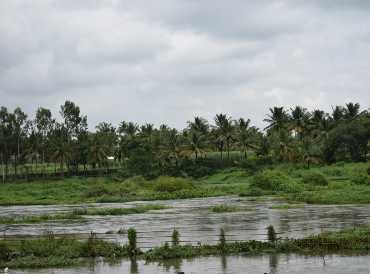Global hydrological variability poses one of the greatest challenges and threats to the world’s population. Our scientists develop hydrological models for flood, drought and water resource management and enable a wide range of stakeholders nationally and internationally to apply them to make communities safer and more resilient.
We have expertise in:
- Flood and drought forecasting
- Modelling at national and local scales using spatial landscape property datasets
- Data assimilation
- Uncertainty estimation
- Comparative model performance assessment
- Real-time hazard and impact forecasting
- Spatial rainfall estimation using rain gauge and weather radar data.
 A team of scientists from six organisations in India and the UK, jointly led by UKCEH and the Indian Institute of Science, set out to assess how the many local, small-scale water management interventions in rural and urban areas affected water resources availability across the entire basin. A detailed study of interventions (e.g. reservoirs, check dams, tanks, borewells, etc.) in both settings informed the set-up of UKCEH’s basin-scale water resources system model, GWAVA.
A team of scientists from six organisations in India and the UK, jointly led by UKCEH and the Indian Institute of Science, set out to assess how the many local, small-scale water management interventions in rural and urban areas affected water resources availability across the entire basin. A detailed study of interventions (e.g. reservoirs, check dams, tanks, borewells, etc.) in both settings informed the set-up of UKCEH’s basin-scale water resources system model, GWAVA.